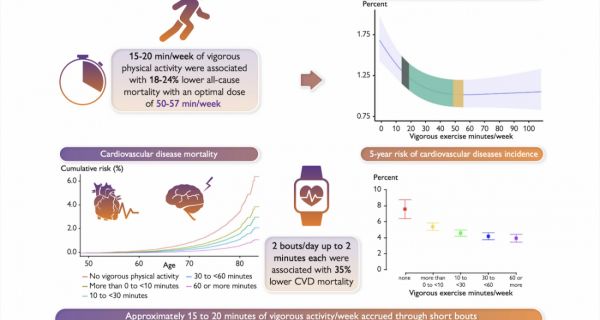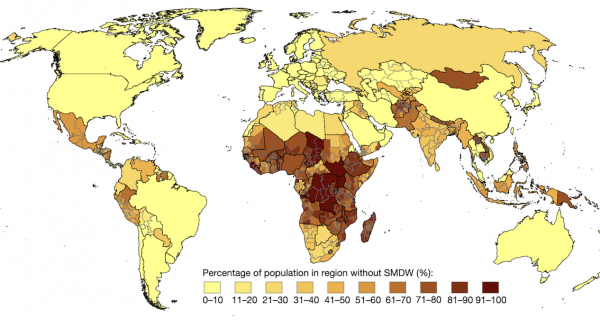11 minutes of moderate-intensity physical activity a day – such as a brisk walk – is enough to lower the risk of diseases such as heart disease, stroke and a number of cancers.
One in ten early deaths can be prevented if everyone managed at least half the recommended level of physical activity (75min/week), say a team led by researchers at the University of Cambridge.

Did you know that cardiovascular disease (CVD) – a disease of the heart or blood vessels – and cancer are the leading causes of death globally?
According to the World Health Organisation (WHO), in 2020, approximately 18 million people died from cardiovascular disease whereas nearly 10 million people died from cancers. That is approximately 1 in 2 deaths.
It is proven and well-known that higher levels of physical activity are associated with a lower risk of all-cause mortality, CVD, and some site-specific cancers.
In a new study published in the British Journal of Sports Medicine, researchers aim to quantify associations between non-work related physical activity (all physical activity done before or after work) and cardiovascular disease, cancer, and mortality outcomes.
After screening titles and abstracts of 48 525 articles, 1280 were selected for full-text screening. In the end, a total of 196 articles were included in the meta-analysis. In total, the meta-analysis for all-cause mortality includes over 160 million person-years and 810 000 deaths. These are 17 and 7 times larger, respectively, than in any other previous study to date.
The authors found evidence of dose-dependent associations between increasing non-occupational physical activity and a wide range of mortality, cardiovascular disease, and cancer outcomes. The strongest associations were observed for all-cause and cardiovascular disease mortality, with weaker associations for the incidence of cancer.
The findings support the current physical recommendations of 2.5–5 hours/week of moderate aerobic physical activity, such as walking fast, doing water aerobics, riding a bike on level ground or with few hills, playing doubles tennis, and pushing a lawn mower, or 75–150 min/week of vigorous aerobic physical activity or an equivalent combination of moderate and vigorous activities such as jogging or running, swimming laps, riding a bike fast or on hills, playing singles tennis, and playing basketball in that this exposure level generally seems to equate to maximum or near-to-maximal benefits. However, the dose–response associations found in the study, also demonstrate that health benefits can also be gained from 75 min/week or less of moderate activity (ie, half the recommended minimum level). Thus, thus findings support the recent change in public health messaging to ‘doing some physical activity is better than doing none’, and suggest that the emphasis on threshold-based recommendations could be further reduced.
Dr. Leandro Garcia from Queen’s University Belfast said: “Moderate activity doesn’t have to involve what we normally think of exercise, such as sports or running. Sometimes, replacing some habits is all that is needed. For example, try to walk or cycle to your work or study place instead of using a car, or engage in active play with your kids or grandkids. Doing activities that you enjoy and that are easy to include in your weekly routine is an excellent way to become more active.”
The research was funded by the Medical Research Council and the European Research Council.
If you’re wondering “What counts as moderate physical activity?” Here’s a good way to think about it: Moderate-intensity physical activity raises your heart rate and makes you breathe faster, but you would still be able to speak during the activity. Some examples include brisk walking, dancing, riding a bike, playing tennis, and hiking.






























































